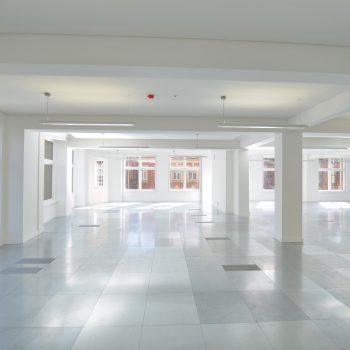AET Flexible Space is rethinking air conditioning systems by using the few inches of space beneath a raised access floor for the distribution of air, eliminating most ducting and pipework
This innovative approach enables savings in construction materials, installation costs and reconfiguration costs. Also, in new build construction, it can free up additional lettable space or reduce overall building height.
The Centre in Hong Kong installed the AET Flexible Space solution and was able to fit in an additional floor for every ten floors constructed due to height savings. The centre was the world’s tenth tallest skyscraper at the time of construction.
A floor void of only 250-300mm is installed to utilise the AET Flexible Space solution; in many new buildings this is already in place. This space accommodates the cabling and fan terminals and, when compared to a typical ceiling void, allows an increased headroom of 200-400mm.
AET’s underfloor air conditioning (UfAC) solution can benefit older buildings with limited headroom or that don’t want to disturb the existing ceiling. Using traditional ceiling based air conditioning systems engineers would find it a challenge to maintain the 2.5m headroom required to promote commercial space as Grade A.
A number of older buildings in the UK have worked with AET to preserve this status such as 28 Savile Row, Tricorn House in Birmingham and 196 Deansgate in Manchester.
In addition to the height saving benefits, the AET UfAC also minimises waste and energy consumption, as well as being easy to operate, clean, and re-use. The flexibility of the AET solution means that building can be future proofed as opposed to tradition air conditioning solutions which are fixed and, therefore, cannot be altered.














